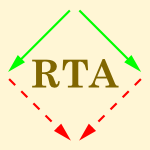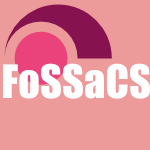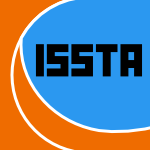96 papers:
 MSR-2015-ZouXGYYZ #analysis #developer #empirical #non-functional #requirements #stack overflow #topic #using
MSR-2015-ZouXGYYZ #analysis #developer #empirical #non-functional #requirements #stack overflow #topic #using- Which Non-functional Requirements Do Developers Focus On? An Empirical Study on Stack Overflow Using Topic Analysis (JZ, LX, WG, MY, DY, XZ), pp. 446–449.
 ICFP-2015-SchererR #question
ICFP-2015-SchererR #question- Which simple types have a unique inhabitant? (GS, DR), pp. 243–255.
 DUXU-IXD-2015-WalterKWAB #adaptation #question #recommendation #what
DUXU-IXD-2015-WalterKWAB #adaptation #question #recommendation #what- What Are the Expectations of Users of an Adaptive Recommendation Service Which Aims to Reduce Driver Distraction? (NW, BK, CW, TA, KB), pp. 517–528.
 HCI-IT-2015-YamamotoYS #game studies #gamification
HCI-IT-2015-YamamotoYS #game studies #gamification- Gamification Effect of Collection System for Digital Photographs with Geographic Information which Utilizes Land Acquisition Game (RY, TY, NS), pp. 649–659.
 HIMI-IKD-2015-AinoyaKT
HIMI-IKD-2015-AinoyaKT- Proposal of New Lighting Which Combined Functionality of Street Light and Outdoor Light (TA, KK, AT), pp. 491–499.
 DATE-2014-ClermidyJOOTTVPB #question
DATE-2014-ClermidyJOOTTVPB #question- Resistive memories: Which applications? (FC, NJ, SO, HO, OT, OT, EV, JMP, MB), pp. 1–6.
 SIGMOD-2014-TermehchyVCW #concept #question
SIGMOD-2014-TermehchyVCW #concept #question- Which concepts are worth extracting? (AT, AV, YC, MW), pp. 779–790.
 ICSME-2014-EderFHJ #question
ICSME-2014-EderFHJ #question- Which Features Do My Users (Not) Use? (SE, HF, BH, MJ), pp. 446–450.
 MSR-2014-BellerBZJ #code review #open source #problem #question
MSR-2014-BellerBZJ #code review #open source #problem #question- Modern code reviews in open-source projects: which problems do they fix? (MB, AB, AZ, EJ), pp. 202–211.
 LCT-TRE-2014-ShimizuO #effectiveness #learning #question
LCT-TRE-2014-ShimizuO #effectiveness #learning #question- Which Is More Effective for Learning German and Japanese Language, Paper or Digital? (RS, KO), pp. 309–318.
 SAC-2014-MoraCGZJEBAH #named
SAC-2014-MoraCGZJEBAH #named- MUSES: a corporate user-centric system which applies computational intelligence methods (AMM, PdlC, JJMG, SZ, MJ, AIEA, MB, HA, ZH), pp. 1719–1723.
 ICSE-2014-ZhangE #configuration management #question
ICSE-2014-ZhangE #configuration management #question- Which configuration option should I change? (SZ, MDE), pp. 152–163.
 ICSM-2013-HillBBDLO #feature model #question
ICSM-2013-HillBBDLO #feature model #question- Which Feature Location Technique is Better? (EH, AB, DB, BD, DL, RO), pp. 408–411.
 ICSM-2013-RajlichH #question
ICSM-2013-RajlichH #question- Which Practices Are Suitable for an Academic Software Project? (VR, JH), pp. 440–443.
 MSR-2013-MukherjeeG #question
MSR-2013-MukherjeeG #question- Which work-item updates need your response? (DM, MG), pp. 12–21.
 HCI-AS-2013-SelvarajahCMCVR #question #web
HCI-AS-2013-SelvarajahCMCVR #question #web- Native Apps versus Web Apps: Which Is Best for Healthcare Applications? (KS, MPC, AM, JC, KV, NRF), pp. 189–196.
 HIMI-LCCB-2013-Canter #hybrid #student
HIMI-LCCB-2013-Canter #hybrid #student- A Hybrid Model for an E-learning System Which Develops Metacognitive Skills at Students (MC), pp. 9–15.
 HIMI-LCCB-2013-ChenL13a #design #industrial #information management
HIMI-LCCB-2013-ChenL13a #design #industrial #information management- Strategic Study of Knowledge Management Which Led into Furniture Design Industry — Taking Example by Taiwan Furniture Industry (CHC, KHL), pp. 433–442.
 KDIR-KMIS-2013-VanthienenC #modelling #process #question
KDIR-KMIS-2013-VanthienenC #modelling #process #question- Modeling Business Decisions and Processes — Which Comes First? (JV, FC), pp. 451–456.
 RecSys-2013-NatarajanSD #collaboration
RecSys-2013-NatarajanSD #collaboration- Which app will you use next?: collaborative filtering with interactional context (NN, DS, ISD), pp. 201–208.
 ICPR-2012-YabushitaSM #3d #framework #image #recognition
ICPR-2012-YabushitaSM #3d #framework #image #recognition- A framework of three-dimensional object recognition which needs only a few reference images (HY, JS, MM), pp. 1375–1378.
 REFSQ-2012-LiM #case study #comparative #traceability #visualisation
REFSQ-2012-LiM #case study #comparative #traceability #visualisation- Which Traceability Visualization Is Suitable in This Context? A Comparative Study (YL, WM), pp. 194–210.
 ICSE-2012-ZimmermannNGM #debugging #predict
ICSE-2012-ZimmermannNGM #debugging #predict- Characterizing and predicting which bugs get reopened (TZ, NN, PJG, BM), pp. 1074–1083.
 VLDB-2011-SrinivasanB #named #realtime
VLDB-2011-SrinivasanB #named #realtime- Citrusleaf: A Real-Time NoSQL DB which Preserves ACID (VS, BB), pp. 1340–1350.
 CHI-2011-KarlsonSL #ecosystem #experience #version control
CHI-2011-KarlsonSL #ecosystem #experience #version control- Which version is this?: improving the desktop experience within a copy-aware computing ecosystem (AKK, GS, BL), pp. 2669–2678.
 HCD-2011-LieberF #design #integration #question
HCD-2011-LieberF #design #integration #question- Human Systems Integration Design: Which Generalized Rationale? (RL, DF), pp. 101–109.
 HCD-2011-YajimaSY #comprehension #problem #visualisation
HCD-2011-YajimaSY #comprehension #problem #visualisation- Understanding the Business Realities: An Interview Technique Which Can Visualize the Job Problems (AY, YS, TY), pp. 449–457.
 HCI-ITE-2011-MurataKMST #design #interface #visualisation
HCI-ITE-2011-MurataKMST #design #interface #visualisation- Design of Shadows on the OHP Metaphor-Based Presentation Interface Which Visualizes a Presenter’s Actions (YM, KK, TM, BS, JT), pp. 557–564.
 HCI-ITE-2011-TakaoYW #development #visual notation
HCI-ITE-2011-TakaoYW #development #visual notation- Development of Embodied Visual Effects Which Expand the Presentation Motion of Emphasis and Indication (YT, MY, TW), pp. 603–612.
 ICEIS-v4-2011-Huang #analysis #empirical #industrial #statistics
ICEIS-v4-2011-Huang #analysis #empirical #industrial #statistics- Which is Better Innovative Investment — An Empirical Analysis of Statistics from Chinese Industrial Undertakings (ZH), pp. 617–628.
 ICEIS-v4-2011-WangX #empirical #multi #performance
ICEIS-v4-2011-WangX #empirical #multi #performance- Is Internal Capital Market of China Listed Companies Efficient? — Empirical Evidences from Listed Companies Which Have Multiple Divisions in H-stock (FW, ZX), pp. 600–605.
 KDD-2011-Reiley #effectiveness #quote
KDD-2011-Reiley #effectiveness #quote- “Which half Is wasted?”: controlled experiments to measure online-advertising effectiveness (DHR), p. 777.
 ICSE-2011-GethersSPOPL #named #question #topic
ICSE-2011-GethersSPOPL #named #question #topic- CodeTopics: which topic am I coding now? (MG, TS, MDP, RO, DP, ADL), pp. 1034–1036.
 ICSE-2010-GuoZNM #debugging #empirical #predict
ICSE-2010-GuoZNM #debugging #empirical #predict- Characterizing and predicting which bugs get fixed: an empirical study of Microsoft Windows (PJG, TZ, NN, BM), pp. 495–504.
 RTA-2010-GuglielmiGP #calculus #proving
RTA-2010-GuglielmiGP #calculus #proving- A Proof Calculus Which Reduces Syntactic Bureaucracy (AG, TG, MP), pp. 135–150.
 CASE-2009-PandeyA #process #towards
CASE-2009-PandeyA #process #towards- Towards a sociable robot guide which respects and supports the human activity (AKP, RA), pp. 262–267.
 WRLA-2008-HolzlMW09 #constraints #question
WRLA-2008-HolzlMW09 #constraints #question- Which Soft Constraints do you Prefer? (MMH, MM, MW), pp. 189–205.
 CHI-2009-HogganCBK #feedback #question
CHI-2009-HogganCBK #feedback #question- Audio or tactile feedback: which modality when? (EEH, AC, SAB, TK), pp. 2253–2256.
 IDGD-2009-TranL #interface #question #research
IDGD-2009-TranL #interface #question #research- Attention to Effects of Different Cross-Cultural Levels in User Research Method’s Interface: Discipline or Nationality — Which Has Stronger Force? (TTT, KPL), pp. 127–134.
 ITiCSE-2008-CharltonMD #learning #performance #social
ITiCSE-2008-CharltonMD #learning #performance #social- Evaluating the extent to which sociability and social presence affects learning performance (TC, LM, MD), p. 342.
 ICPC-2007-Vivanco #algorithm #complexity #identification #metric #modelling #predict #search-based #source code
ICPC-2007-Vivanco #algorithm #complexity #identification #metric #modelling #predict #search-based #source code- Use of a Genetic Algorithm to Identify Source Code Metrics Which Improves Cognitive Complexity Predictive Models (RAV), pp. 297–300.
 ICEIS-SAIC-2007-BelbezeS #behaviour #web #web service
ICEIS-SAIC-2007-BelbezeS #behaviour #web #web service- Which Contribution of the Web Services in the Improvement of Web Searching? A Behavioural Study of the Net Surfers (CB, CSD), pp. 129–137.
 ESEC-FSE-2007-KimE #question
ESEC-FSE-2007-KimE #question- Which warnings should I fix first? (SK, MDE), pp. 45–54.
 ICEIS-ISAS-2006-GoeppK #information management #problem #question #requirements
ICEIS-ISAS-2006-GoeppK #information management #problem #question #requirements- Key-Problem and Goal Driven Requirements Engineering — Which Complementarities for Manufacturing Information Systems? (VG, FK), pp. 102–109.
 ICPR-v2-2006-ZhengYYW #classification #effectiveness #image #problem
ICPR-v2-2006-ZhengYYW #classification #effectiveness #image #problem- Effective classification image space which can solve small sample size problem (YJZ, JYY, JY, XW), pp. 861–864.
 CC-2006-CavazosMO #algorithm #hybrid #optimisation #question
CC-2006-CavazosMO #algorithm #hybrid #optimisation #question- Hybrid Optimizations: Which Optimization Algorithm to Use? (JC, JEBM, MFPO), pp. 124–138.
 DAC-2005-WilsonGHMLBTC #framework #question
DAC-2005-WilsonGHMLBTC #framework #question- Structured/platform ASIC apprentices: which platform will survive your board room? (RW, JG, CH, KM, SL, IB, RT, RC), pp. 887–888.
 ICPR-v1-2004-XuWTQ #question #recognition
ICPR-v1-2004-XuWTQ #question #recognition- Depth vs. Intensity: Which is More Important for Face Recognition? (CX, YW, TT, LQ), pp. 342–345.
 SIGIR-2004-Leidner
SIGIR-2004-Leidner- Toponym resolution in text (abstract only): “which sheffield is it?” (JLL), p. 602.
 HT-2003-MarshallS #question #semantics #web
HT-2003-MarshallS #question #semantics #web- Which semantic web? (CCM, FMSI), pp. 57–66.
 DAC-2002-KahngCGLNRH #question #tool support
DAC-2002-KahngCGLNRH #question #tool support- Tools or users: which is the bigger bottleneck? (ABK, RC, PG, LL, NN, PKR, LvdH), pp. 76–77.
 FoSSaCS-2002-GodardM #graph #product line
FoSSaCS-2002-GodardM #graph #product line- A Characterization of Families of Graphs in Which Election Is Possible (EG, YM), pp. 159–172.
 WCRE-2002-HarmanGHB #algorithm #concept #slicing
WCRE-2002-HarmanGHB #algorithm #concept #slicing- Code Extraction Algorithms which Unify Slicing and Concept Assignment (MH, NG, RMH, DB), pp. 11–21.
 ICPR-v3-2002-BalciA #estimation #gender #question
ICPR-v3-2002-BalciA #estimation #gender #question- PCA for Gender Estimation: Which Eigenvectors Contribute? (KB, VA), pp. 363–366.
 WCRE-2001-HarmanHMZ #named #slicing
WCRE-2001-HarmanHMZ #named #slicing- GUSTT: An Amorphous Slicing System which Combines Slicing and Transformation (MH, LH, MM, XZ), pp. 271–280.
 SAIG-2001-HerrmannL #approach #optimisation
SAIG-2001-HerrmannL #approach #optimisation- A Transformational Approach which Combines Size Inference and Program Optimization (CAH, CL), pp. 199–218.
 ICALP-2000-Hastad #algorithm #approximate #np-hard #optimisation #performance #problem #question
ICALP-2000-Hastad #algorithm #approximate #np-hard #optimisation #performance #problem #question- Which NP-Hard Optimization Problems Admit Non-trivial Efficient Approximation Algorithms? (JH), p. 235.
 ICPR-v3-2000-MaedaKZI #3d #modelling
ICPR-v3-2000-MaedaKZI #3d #modelling- 3-D Shapes Modeling which has Hierarchical Structure Based on B-Spline Surfaces with Non-Uniform Knots (MM, KK, HZ, KI), pp. 3119–3122.
 KDD-2000-GavrilovAIM #mining #question
KDD-2000-GavrilovAIM #mining #question- Mining the stock market (extended abstract): which measure is best? (MG, DA, PI, RM), pp. 487–496.
 ISSTA-2000-HindP #analysis #pointer #question
ISSTA-2000-HindP #analysis #pointer #question- Which pointer analysis should I use? (MH, AP), pp. 113–123.
 FM-v1-1999-Jones
FM-v1-1999-Jones- Scientific Decisions which Characterize VDM (CBJ), pp. 28–47.
 HCI-EI-1999-KitakazeAIF #adaptation #evaluation
HCI-EI-1999-KitakazeAIF #adaptation #evaluation- Study of Adaptive Input System for Telecommunication Terminal — Evaluation of Discriminant which Controls Computer key-input - (SK, YA, TI, SF), pp. 74–78.
 TLCA-1999-Ritter #termination
TLCA-1999-Ritter #termination- Characterising Explicit Substitutions which Preserve Termination (ER), pp. 325–339.
 ICPR-1998-SebeLH #image #metric #ranking #retrieval
ICPR-1998-SebeLH #image #metric #ranking #retrieval- Which ranking metric is optimal? With applications in image retrieval and stereo matching (NS, MSL, DPH), pp. 265–271.
 KDD-1998-KeoghP #classification #clustering #feedback #performance #representation
KDD-1998-KeoghP #classification #clustering #feedback #performance #representation- An Enhanced Representation of Time Series Which Allows Fast and Accurate Classification, Clustering and Relevance Feedback (EJK, MJP), pp. 239–243.
 IFL-1997-Erwig #graph #persistent #question
IFL-1997-Erwig #graph #persistent #question- Fully Persistent Graphs — Which One To Choose? (ME), pp. 123–140.
 HCI-CC-1997-KoisoSYN #communication
HCI-CC-1997-KoisoSYN #communication- Communication Model in Emergency Which Considers Competence, Duty and Responsibility (TK, NS, TY, SN), pp. 49–52.
 HCI-SEC-1997-UenoSO #html #question
HCI-SEC-1997-UenoSO #html #question- Book Based View and Scroll Based View: Which is Suited for HTML Viewers? (KU, KS, HO), pp. 795–798.
 SAC-1997-PerrizoZK #multi #query
SAC-1997-PerrizoZK #multi #query- A query processing method for data warehouses which contain multimedia (WP, ZZ, SK), pp. 323–327.
 ICPR-1996-BhattacharyaCP #segmentation #set
ICPR-1996-BhattacharyaCP #segmentation #set- An MLP-based texture segmentation technique which does not require a feature set (UB, BBC, SKP), pp. 805–809.
 ALP-1996-FerreiraKP #composition #normalisation #λ-calculus
ALP-1996-FerreiraKP #composition #normalisation #λ-calculus- λ-Calculi with Explicit Substitutions and Composition Which Preserve β-Strong Normalization (MCFF, DK, LP), pp. 284–298.
 ICSE-1996-AvrilionisCF #evolution #named #process #reuse
ICSE-1996-AvrilionisCF #evolution #named #process #reuse- OPSIS: A View Mechanism for Software Processes Which Supports Their Evolution and Reuse (DA, PYC, CF), pp. 38–47.
 PEPM-1994-FegarasSZ #induction #multi #source code
PEPM-1994-FegarasSZ #induction #multi #source code- Improving Programs Which Recurse over Multiple Inductive Structures (LF, TS, TZ), pp. 21–32.
 ILPS-1994-CharlierRH #abstract interpretation #framework #prolog
ILPS-1994-CharlierRH #abstract interpretation #framework #prolog- An Abstract Interpretation Framework which Accurately Handles Prolog Search-Rule and the Cut (BLC, SR, PVH), pp. 157–171.
 STOC-1993-Shamir #generative #multi #on the
STOC-1993-Shamir #generative #multi #on the- On the generation of multivariate polynomials which are hard to factor (AS), pp. 796–804.
 ICALP-1993-Kann #approximate #bound #problem
ICALP-1993-Kann #approximate #bound #problem- Polynomially Bounded Minimization Problems which are Hard to Approximate (VK), pp. 52–63.
 CHI-1992-MynattLIFR #hypermedia #question
CHI-1992-MynattLIFR #hypermedia #question- Hypertext or Book: Which is Better for Answering Questions? (BTM, LML, KI, JF, DSR), pp. 19–25.
 ML-1992-Hickey #algorithm #approach #evaluation #towards
ML-1992-Hickey #algorithm #approach #evaluation #towards- Artificial Universes — Towards a Systematic Approach to Evaluation Algorithms which Learn form Examples (RJH), pp. 196–205.
 CADE-1992-LuskW #benchmark #metric #problem #similarity
CADE-1992-LuskW #benchmark #metric #problem #similarity- Benchmark Problems in Which Equality Plays the Major Role (ELL, LW), pp. 781–785.
 CAiSE-1991-Kalman #algorithm #concept #database #implementation #relational
CAiSE-1991-Kalman #algorithm #concept #database #implementation #relational- Implementation and Critique of an Algorithm which Maps a Relational Database to a Conceptual Model (KK), pp. 393–415.
 GG-1990-Nagl #graph grammar
GG-1990-Nagl #graph grammar- Graph Grammars which are Suitable for Applications (MN), pp. 54–56.
 SEKE-1989-WuCZT #identification #morphism #novel #query #subclass
SEKE-1989-WuCZT #identification #morphism #novel #query #subclass- A Novel Way 1o Identify IneguaIity Query Subclasses Which possess the Homomorphism Property (TW, JLC, NZ, KT), pp. 158–163.
 NACLP-1989-HeED #database
NACLP-1989-HeED #database- An Expert System which Intelligently Accesses an External Database (XH, GWE, FD), pp. 209–223.
 STOC-1987-Vaidya #algorithm #linear #programming
STOC-1987-Vaidya #algorithm #linear #programming- An Algorithm for Linear Programming which Requires O(((m+n)n^2 + (m+n)^1.5 n)L) Arithmetic Operations (PMV), pp. 29–38.
 STOC-1983-Immerman #complexity
STOC-1983-Immerman #complexity- Languages Which Capture Complexity Classes (Preliminary Report) (NI), pp. 347–354.
 STOC-1982-Leighton #layout
STOC-1982-Leighton #layout- A Layout Strategy for VLSI which Is Provably Good (Extended Abstract) (FTL), pp. 85–98.
 ICALP-1981-ItzhaikY #equivalence #linear
ICALP-1981-ItzhaikY #equivalence #linear- A Decision Procedure for the Equivalence of Two DPDAs, One of Which is Linear (Extended Abstract) (YI, AY), pp. 229–237.
 STOC-1980-HeintzS #testing
STOC-1980-HeintzS #testing- Testing Polynomials which Are Easy to Compute (Extended Abstract) (JH, CPS), pp. 262–272.
 STOC-1980-Tompa80a #algorithm #implementation #polynomial #sublinear #transitive
STOC-1980-Tompa80a #algorithm #implementation #polynomial #sublinear #transitive- Two Familiar Transitive Closure Algorithms which Admit No Polynomial Time, Sublinear Space Implementations (MT), pp. 333–338.
 STOC-1979-ODonnell #independence #programming language #theorem
STOC-1979-ODonnell #independence #programming language #theorem- A Programming Language Theorem Which Is Independent of Peano Arithmetic (MO), pp. 176–188.
 ICALP-1979-MonienS #nondeterminism #on the #turing machine
ICALP-1979-MonienS #nondeterminism #on the #turing machine- On Eliminating Nondeterminism From Turing Machines Which Use Less Than Logarithmic Worktape Space (BM, IHS), pp. 431–445.
 GG-1978-Staples #reduction #λ-calculus
GG-1978-Staples #reduction #λ-calculus- A Graph-Like λ Calculus for Which Leftmost-Overmost Reduction is Optimal (JS), pp. 440–455.
 POPL-1977-Clarke #axiom #hoare #programming language
POPL-1977-Clarke #axiom #hoare #programming language- Programming Language Constructs for Which it is Impossible to Obtain “Good” Hoare-Like Axiom Systems (EMC), pp. 10–20.
 ICSE-1976-Fabry #design #how #on the fly
ICSE-1976-Fabry #design #how #on the fly- How to Design a System in Which Modules Can Be Changed on the Fly (RSF), pp. 470–476.
 STOC-1975-EvenT #combinator #polynomial #problem
STOC-1975-EvenT #combinator #polynomial #problem- a Combinatorial Problem which is Complete in Polynomial Space (SE, RET), pp. 66–71.
 STOC-1969-Young #order #set
STOC-1969-Young #order #set- Speed-Ups by Changing the Order in Which Sets are Enumerated (Preliminary Version) (PRY), pp. 89–92.
 MSR-2015-ZouXGYYZ #analysis #developer #empirical #non-functional #requirements #stack overflow #topic #using
MSR-2015-ZouXGYYZ #analysis #developer #empirical #non-functional #requirements #stack overflow #topic #using ICFP-2015-SchererR #question
ICFP-2015-SchererR #question DUXU-IXD-2015-WalterKWAB #adaptation #question #recommendation #what
DUXU-IXD-2015-WalterKWAB #adaptation #question #recommendation #what HCI-IT-2015-YamamotoYS #game studies #gamification
HCI-IT-2015-YamamotoYS #game studies #gamification HIMI-IKD-2015-AinoyaKT
HIMI-IKD-2015-AinoyaKT DATE-2014-ClermidyJOOTTVPB #question
DATE-2014-ClermidyJOOTTVPB #question SIGMOD-2014-TermehchyVCW #concept #question
SIGMOD-2014-TermehchyVCW #concept #question ICSME-2014-EderFHJ #question
ICSME-2014-EderFHJ #question MSR-2014-BellerBZJ #code review #open source #problem #question
MSR-2014-BellerBZJ #code review #open source #problem #question LCT-TRE-2014-ShimizuO #effectiveness #learning #question
LCT-TRE-2014-ShimizuO #effectiveness #learning #question SAC-2014-MoraCGZJEBAH #named
SAC-2014-MoraCGZJEBAH #named ICSE-2014-ZhangE #configuration management #question
ICSE-2014-ZhangE #configuration management #question ICSM-2013-HillBBDLO #feature model #question
ICSM-2013-HillBBDLO #feature model #question ICSM-2013-RajlichH #question
ICSM-2013-RajlichH #question MSR-2013-MukherjeeG #question
MSR-2013-MukherjeeG #question HCI-AS-2013-SelvarajahCMCVR #question #web
HCI-AS-2013-SelvarajahCMCVR #question #web HIMI-LCCB-2013-Canter #hybrid #student
HIMI-LCCB-2013-Canter #hybrid #student HIMI-LCCB-2013-ChenL13a #design #industrial #information management
HIMI-LCCB-2013-ChenL13a #design #industrial #information management KDIR-KMIS-2013-VanthienenC #modelling #process #question
KDIR-KMIS-2013-VanthienenC #modelling #process #question RecSys-2013-NatarajanSD #collaboration
RecSys-2013-NatarajanSD #collaboration ICPR-2012-YabushitaSM #3d #framework #image #recognition
ICPR-2012-YabushitaSM #3d #framework #image #recognition REFSQ-2012-LiM #case study #comparative #traceability #visualisation
REFSQ-2012-LiM #case study #comparative #traceability #visualisation ICSE-2012-ZimmermannNGM #debugging #predict
ICSE-2012-ZimmermannNGM #debugging #predict VLDB-2011-SrinivasanB #named #realtime
VLDB-2011-SrinivasanB #named #realtime CHI-2011-KarlsonSL #ecosystem #experience #version control
CHI-2011-KarlsonSL #ecosystem #experience #version control HCD-2011-LieberF #design #integration #question
HCD-2011-LieberF #design #integration #question HCD-2011-YajimaSY #comprehension #problem #visualisation
HCD-2011-YajimaSY #comprehension #problem #visualisation HCI-ITE-2011-MurataKMST #design #interface #visualisation
HCI-ITE-2011-MurataKMST #design #interface #visualisation HCI-ITE-2011-TakaoYW #development #visual notation
HCI-ITE-2011-TakaoYW #development #visual notation ICEIS-v4-2011-Huang #analysis #empirical #industrial #statistics
ICEIS-v4-2011-Huang #analysis #empirical #industrial #statistics ICEIS-v4-2011-WangX #empirical #multi #performance
ICEIS-v4-2011-WangX #empirical #multi #performance KDD-2011-Reiley #effectiveness #quote
KDD-2011-Reiley #effectiveness #quote ICSE-2011-GethersSPOPL #named #question #topic
ICSE-2011-GethersSPOPL #named #question #topic ICSE-2010-GuoZNM #debugging #empirical #predict
ICSE-2010-GuoZNM #debugging #empirical #predict RTA-2010-GuglielmiGP #calculus #proving
RTA-2010-GuglielmiGP #calculus #proving CASE-2009-PandeyA #process #towards
CASE-2009-PandeyA #process #towards WRLA-2008-HolzlMW09 #constraints #question
WRLA-2008-HolzlMW09 #constraints #question CHI-2009-HogganCBK #feedback #question
CHI-2009-HogganCBK #feedback #question IDGD-2009-TranL #interface #question #research
IDGD-2009-TranL #interface #question #research ITiCSE-2008-CharltonMD #learning #performance #social
ITiCSE-2008-CharltonMD #learning #performance #social ICPC-2007-Vivanco #algorithm #complexity #identification #metric #modelling #predict #search-based #source code
ICPC-2007-Vivanco #algorithm #complexity #identification #metric #modelling #predict #search-based #source code ICEIS-SAIC-2007-BelbezeS #behaviour #web #web service
ICEIS-SAIC-2007-BelbezeS #behaviour #web #web service ESEC-FSE-2007-KimE #question
ESEC-FSE-2007-KimE #question ICEIS-ISAS-2006-GoeppK #information management #problem #question #requirements
ICEIS-ISAS-2006-GoeppK #information management #problem #question #requirements ICPR-v2-2006-ZhengYYW #classification #effectiveness #image #problem
ICPR-v2-2006-ZhengYYW #classification #effectiveness #image #problem CC-2006-CavazosMO #algorithm #hybrid #optimisation #question
CC-2006-CavazosMO #algorithm #hybrid #optimisation #question DAC-2005-WilsonGHMLBTC #framework #question
DAC-2005-WilsonGHMLBTC #framework #question ICPR-v1-2004-XuWTQ #question #recognition
ICPR-v1-2004-XuWTQ #question #recognition SIGIR-2004-Leidner
SIGIR-2004-Leidner HT-2003-MarshallS #question #semantics #web
HT-2003-MarshallS #question #semantics #web DAC-2002-KahngCGLNRH #question #tool support
DAC-2002-KahngCGLNRH #question #tool support FoSSaCS-2002-GodardM #graph #product line
FoSSaCS-2002-GodardM #graph #product line WCRE-2002-HarmanGHB #algorithm #concept #slicing
WCRE-2002-HarmanGHB #algorithm #concept #slicing ICPR-v3-2002-BalciA #estimation #gender #question
ICPR-v3-2002-BalciA #estimation #gender #question WCRE-2001-HarmanHMZ #named #slicing
WCRE-2001-HarmanHMZ #named #slicing SAIG-2001-HerrmannL #approach #optimisation
SAIG-2001-HerrmannL #approach #optimisation ICALP-2000-Hastad #algorithm #approximate #np-hard #optimisation #performance #problem #question
ICALP-2000-Hastad #algorithm #approximate #np-hard #optimisation #performance #problem #question ICPR-v3-2000-MaedaKZI #3d #modelling
ICPR-v3-2000-MaedaKZI #3d #modelling KDD-2000-GavrilovAIM #mining #question
KDD-2000-GavrilovAIM #mining #question ISSTA-2000-HindP #analysis #pointer #question
ISSTA-2000-HindP #analysis #pointer #question FM-v1-1999-Jones
FM-v1-1999-Jones HCI-EI-1999-KitakazeAIF #adaptation #evaluation
HCI-EI-1999-KitakazeAIF #adaptation #evaluation TLCA-1999-Ritter #termination
TLCA-1999-Ritter #termination ICPR-1998-SebeLH #image #metric #ranking #retrieval
ICPR-1998-SebeLH #image #metric #ranking #retrieval KDD-1998-KeoghP #classification #clustering #feedback #performance #representation
KDD-1998-KeoghP #classification #clustering #feedback #performance #representation IFL-1997-Erwig #graph #persistent #question
IFL-1997-Erwig #graph #persistent #question HCI-CC-1997-KoisoSYN #communication
HCI-CC-1997-KoisoSYN #communication HCI-SEC-1997-UenoSO #html #question
HCI-SEC-1997-UenoSO #html #question SAC-1997-PerrizoZK #multi #query
SAC-1997-PerrizoZK #multi #query ICPR-1996-BhattacharyaCP #segmentation #set
ICPR-1996-BhattacharyaCP #segmentation #set ALP-1996-FerreiraKP #composition #normalisation #λ-calculus
ALP-1996-FerreiraKP #composition #normalisation #λ-calculus ICSE-1996-AvrilionisCF #evolution #named #process #reuse
ICSE-1996-AvrilionisCF #evolution #named #process #reuse PEPM-1994-FegarasSZ #induction #multi #source code
PEPM-1994-FegarasSZ #induction #multi #source code ILPS-1994-CharlierRH #abstract interpretation #framework #prolog
ILPS-1994-CharlierRH #abstract interpretation #framework #prolog STOC-1993-Shamir #generative #multi #on the
STOC-1993-Shamir #generative #multi #on the ICALP-1993-Kann #approximate #bound #problem
ICALP-1993-Kann #approximate #bound #problem CHI-1992-MynattLIFR #hypermedia #question
CHI-1992-MynattLIFR #hypermedia #question ML-1992-Hickey #algorithm #approach #evaluation #towards
ML-1992-Hickey #algorithm #approach #evaluation #towards CADE-1992-LuskW #benchmark #metric #problem #similarity
CADE-1992-LuskW #benchmark #metric #problem #similarity CAiSE-1991-Kalman #algorithm #concept #database #implementation #relational
CAiSE-1991-Kalman #algorithm #concept #database #implementation #relational GG-1990-Nagl #graph grammar
GG-1990-Nagl #graph grammar SEKE-1989-WuCZT #identification #morphism #novel #query #subclass
SEKE-1989-WuCZT #identification #morphism #novel #query #subclass NACLP-1989-HeED #database
NACLP-1989-HeED #database STOC-1987-Vaidya #algorithm #linear #programming
STOC-1987-Vaidya #algorithm #linear #programming STOC-1983-Immerman #complexity
STOC-1983-Immerman #complexity STOC-1982-Leighton #layout
STOC-1982-Leighton #layout ICALP-1981-ItzhaikY #equivalence #linear
ICALP-1981-ItzhaikY #equivalence #linear STOC-1980-HeintzS #testing
STOC-1980-HeintzS #testing STOC-1980-Tompa80a #algorithm #implementation #polynomial #sublinear #transitive
STOC-1980-Tompa80a #algorithm #implementation #polynomial #sublinear #transitive STOC-1979-ODonnell #independence #programming language #theorem
STOC-1979-ODonnell #independence #programming language #theorem ICALP-1979-MonienS #nondeterminism #on the #turing machine
ICALP-1979-MonienS #nondeterminism #on the #turing machine GG-1978-Staples #reduction #λ-calculus
GG-1978-Staples #reduction #λ-calculus POPL-1977-Clarke #axiom #hoare #programming language
POPL-1977-Clarke #axiom #hoare #programming language ICSE-1976-Fabry #design #how #on the fly
ICSE-1976-Fabry #design #how #on the fly STOC-1975-EvenT #combinator #polynomial #problem
STOC-1975-EvenT #combinator #polynomial #problem STOC-1969-Young #order #set
STOC-1969-Young #order #set









